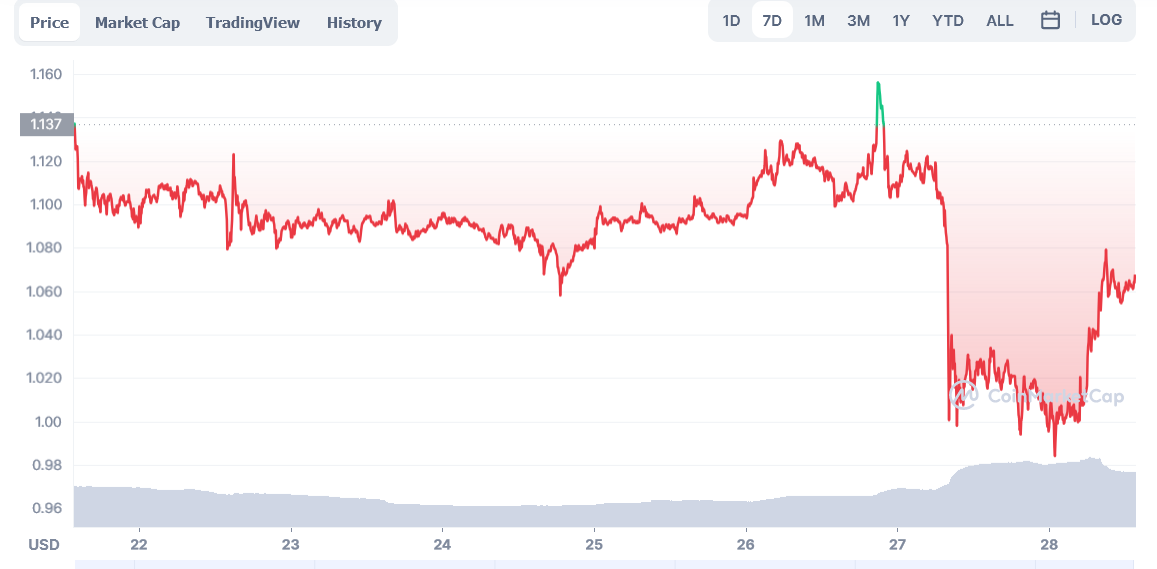Navigating decentralized exchanges can be challenging, especially with the issue of slippage. Slippage occurs when the price you execute a trade differs from the expected price. Understanding how to reduce slippage is important to improving your trading results. This happens often due to the nature of liquidity pools and market volatility.
Knowing techniques for minimizing this price difference is beneficial when trading on platforms like an aggregated multichain liquidity trading platform. By learning these strategies, you can make more informed decisions and save on costs. Decentralized platforms aim to provide a more secure trading environment, but understanding how they work is important to trading success.
Set Slippage Tolerance Accurately
Setting your slippage tolerance correctly is important when trading on decentralized exchanges. Slippage refers to the difference between the expected price of a trade and the actual price you get. To manage this, set a slippage tolerance that you are comfortable with.
A common practice is to set your slippage tolerance to around 0.5% to 1%. This range balances the need to complete transactions quickly while limiting potential losses. The specific percentage depends on market conditions and personal risk preferences.
Be aware that setting a slippage tolerance too low might result in orders not being filled, especially in volatile markets. On the other hand, a higher tolerance might lead to unexpected losses. Adjust your settings based on the market liquidity you are trading in.
Using tools or features that allow manual adjustment helps tailor slippage tolerance to suit trade situations. Monitoring current market conditions can also guide you in making the right adjustments to your settings.
Use Limit Orders
Using limit orders is a smart strategy to manage slippage on decentralized exchanges. A limit order lets you set the price for buying or selling an asset. This means your trade will only execute when the market reaches your specified price.

Unlike market orders, which fill at the great available price, limit orders give you more control. They reduce the risk of execution at a less favorable price, which is especially helpful in volatile markets.
Limit orders can be slower to execute, particularly if the market price doesn’t reach your set level right away. This delay can be a downside if you need immediate trade execution. Despite this, limit orders are still a popular choice for many traders. To maximize their effectiveness, consider breaking down large trades into multiple limit orders. This approach can help manage slippage further by reducing the impact on the market price.
Using limit orders requires patience. It’s important to watch market trends closely and adjust your order settings as needed. This strategy not only helps manage slippage but also allows you to trade with greater precision.
Trade During Low Volatility
Trading during periods of low volatility can help you reduce slippage on decentralized exchanges. When markets are stable, prices do not change rapidly, which means you are more likely to execute trades at your expected price.
Low volatility periods often occur when there is less overall market activity. You might notice this during certain times of the day or during specific weeks when fewer people are trading.
By watching the market trends and timing your trades accordingly, you can make trading more favorable for you. If you’re trading in a market that typically experiences high volatility, be patient and wait for calmer times. This patience can save you money by reducing unexpected costs from slippage.
In addition, focusing on lower-volatility assets can also help. Some cryptocurrencies are more stable than others, so trading these might lower your chances of slippage. Research and choose wisely to find those assets that align with your trading goals.
Monitoring liquidity is another key factor. High liquidity often means lower volatility, making it easier for you to execute trades smoothly. Platforms with ample liquidity allow you to move larger amounts without significant price changes.
Utilize Protocols with Less Congestion
Using less congested protocols can help reduce slippage on decentralized exchanges. When a network experiences high traffic, it leads to slower transaction times and increases the risk of slippage. By choosing protocols with fewer users at certain times, you can navigate the system more smoothly.

Avoid peak hours if possible. During these times, many traders are active, causing congestion and driving up the slippage risk. For instance, trading outside peak hours, like late evenings or early mornings, could help.
Another approach is to monitor network activity through online tools. These tools provide insights into current traffic levels, helping you decide the great time to trade with reduced congestion. Using this information wisely can make a big difference in your trading experience.
Following strategies to utilize protocols with less congestion helps keep slippage minimal and your trades more efficient. Reduced congestion not only saves time but also optimizes your trading outcomes.
Conclusion
Reducing slippage on decentralized exchanges can significantly improve your trading experience. By breaking large trades into smaller ones, you can minimize the impact on price. Using high liquidity pools is also a smart way to lower slippage risks.
Set a slippage tolerance in your trading settings to prevent undesirable trades. This allows your transactions to halt if prices fluctuate too much. Choose platforms with advanced liquidity management features for more predictable outcomes.
By applying these strategies, you can optimize your trading and increase your potential gains.
Market Maestro: With an uncanny ability to predict the ups and downs of the crypto market, Jordan is our go-to for all things investment. Just don’t ask him for lottery numbers; he says it’s a different kind of prediction magic.



